A hilarious scene in “Walk Hard: The Dewey Cox Story” features a musician’s first experience with cannabis.
It shows an exchange between the title character, played by John C. Reilly, and his drummer, Sam, played by Tim Meadows. Dewey bursts into a room backstage, where Sam and a few other people had gathered to use cannabis.
“We’re smoking reefer, and you don’t want no part of this s—,” Sam tells Dewey.
Dewey, although curious about cannabis, actually tries to assist Sam in his effort to discourage Dewey’s curiosity.
“You know what, I don’t want no hangover,” Dewey says.
“It doesn’t give you a hangover!” Sam replies.
Dewey raises four other concerns about cannabis, and Sam shoots them all down. But was Sam right? Let’s take a look.

Next-day side effects of cannabis use can include "brain fog," feeling tired, and feeling less alert than usual. Some cannabis users report zero hangover-like effects the morning after using cannabis.
There has been limited research about cannabis’ lingering effects on users the following morning. But there is a mountain of anecdotal evidence. Some cannabis users say the drug gives them no hangover, but others have noted some adverse effects.
In a 2017 study, some patients reported a “brain fog” or a “non-alert feeling” the morning after using cannabis.
A 2019 study found “daytime fatigue” is a potential short-term outcome of using cannabis to improve sleep.
Let’s pause a moment to compare these symptoms to those of an alcohol-induced hangover. A night of drinking can leave one feeling not just fatigued but downright miserable. Alcohol hangovers typically cause nausea, muscle aches, stomach pain, irritability, and other unpleasant effects.
Maybe Sam had an alcohol hangover in mind when he told Dewey that cannabis doesn’t give you a hangover.
In a 1990 study, researchers performed tests on 12 regular cannabis users over two weekends.
“In short, marijuana smoking was not associated with a ‘hangover’ syndrome similar to those reported after use of alcohol or long-acting sedative-hypnotics,” the study authors wrote.
That study had a few limitations. There were only 12 participants, and none of them were female. Another issue was the cannabis used in the study contained about 2% THC – relatively low by today’s standards.
One way to minimize the potential next-day effects of cannabis consumption is to learn your “just right dose.” By using the minimum amount of THC needed to treat your condition, you can minimize any lingering effects too. Use our handy “Find Your Just Right Dose” guide for a step-by-step tutorial.
Verdict: Mixed. Cannabis may or may not have noticeable lingering effects on the user the day after consumption. If you’re new to cannabis, consider that you may feel less alert than usual in the morning after using THC.

Tim Meadows plays "Sam," who makes a number of dubious statements about cannabis in "Walk Hard: The Dewey Cox Story." Image courtesy: Columbia Pictures
Cannabis may not have the powerful addictive qualities of nicotine, cocaine, or opiates, but it can still become a habit. In fact, this habit has a name: cannabis use disorder (CUD).
People with CUD often have a high tolerance for cannabis and may feel withdrawal symptoms after ceasing cannabis use. Cannabis withdrawal symptoms can include anxiety, irritability, and difficulty sleeping.
Other signs of CUD include cannabis-related interpersonal problems, neglecting significant responsibilities, and disinterest in activities one used to enjoy.
“There is clinical and epidemiological evidence that some heavy cannabis users experience problems controlling their cannabis use, and continue to use despite adverse personal consequences of use,” the authors of a 2001 study wrote. “Surveys in the USA and Australia show that cannabis dependence is the most common form of drug dependence after alcohol and tobacco.”
The good news is that most cannabis users do not develop cannabis use disorder. One commonly-cited study shows about 9% of cannabis users will become dependent on the drug. According to a 2020 survey, 5.1% of Americans age 12 or older had a cannabis use disorder in the last year.
Verdict: Mixed. If Sam had qualified his statement by saying, “It’s not usually habit-forming,” we’d say that’s true. But the reality is millions of Americans have cannabis use disorder.
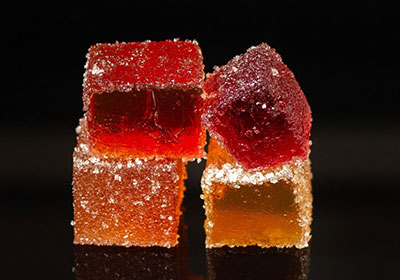
Edible cannabis products, like the gelatinous cubes sold in Utah, are the most common source of cannabis overdoses. Fortunately, the unpleasant effects of cannabis overdoses are temporary and non-lethal.
Sam probably meant you couldn’t fatally overdose on cannabis, which is true. There is no recorded evidence of deaths directly attributable to cannabis alone.
But using too much THC can cause uncomfortable side effects like anxiety, paranoia, and an elevated heart rate. We think of a “cannabis overdose” as any use resulting in uncomfortable or unpleasant reactions.
Fortunately, these unpleasant effects are temporary and non-lethal.
Most THC overdoses occur with edible forms of cannabis. Some people call this type of overdose a “cookie casualty.” A typical cookie casualty happens when the user ingests a cannabis edible and grows impatient with the onset time. Rather than waiting for the initial dose to take effect, the user decides to take another one.
Resting in a tranquil setting and drinking plenty of water can help with a THC overdose. Using CBD may also reduce any unpleasant effects.
Verdict: Mixed. Cannabis overdoses are not only possible but pretty common, especially with inexperienced users. In this sense, Sam’s statement is false. However, this character may well have been thinking of a fatal overdose, which doesn’t happen with cannabis.

Cannabis indeed makes sex better for many people. But using too much THC could kill the mood.
If you skipped straight to this section, we won’t hold it against you. Fortunately, there’s some great news here for sexually-active cannabis users!
A 2017 study found a positive association between cannabis use and sexual frequency among men and women of all demographics.
“Marijuana use is independently associated with increased sexual frequency and does not appear to impair sexual function,” the study says.
In other words, cannabis users tend to be more sexually active than non-users.
In 2003, researchers reviewed dozens of other studies to gain insight into the self-reported effects of cannabis. They found cannabis users frequently endorsed the drug because it increases sexual pleasure or sexual arousal. But a small percentage of users reported cannabis makes them less sexually aroused or causes difficulty in reaching orgasm.
THC is “biphasic,” meaning a small dose has one effect, and a larger dose has the opposite effect. Research has shown low amounts of THC can increase sexual desire and enjoyment. But larger quantities can cause sexual problems like anxiety, inhibited orgasm, and lack of interest. The “start low and go slow” approach to using Medical Cannabis seems relevant in this case too.
Verdict: Likely true for most sexually-active cannabis users, based on limited anecdotal evidence.
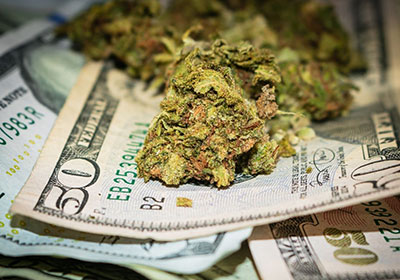
An eighth of an ounce of Medical Cannabis flower typically costs about $60 in Utah. Patients often complain about the steep cost of cannabis.
Cheaper than a dollar-store bottle of aspirin? Hardly. Maybe Sam meant cannabis is the cheapest street drug. At the time, for this particular mid-20th century character, cannabis may well have been the most inexpensive (street) drug available.
Regardless, the cost of street drugs can vary widely due to several factors. These include drug quality/potency, supply vs. demand, and the general availability of illicit drugs in a particular region.
Today, the high cost of cannabis is one of the top complaints among Utah’s Medical Cannabis patients. An eighth of an ounce of cannabis flower typically costs about $60 at Utah’s cannabis pharmacies.
Verdict: Mixed. This statement may be true for people in some cases. But it’s certainly not true when considering the cost of Medical Cannabis versus the expense of other medicines in Utah.
The “Walk Hard” scene appeals to many cannabis users by reinforcing some commonly-held but dubious beliefs about cannabis. In reality, there are serious risks and complications that can arise from cannabis use. Utah Therapeutic Health Center advocates for the responsible and safe use of all Medical Cannabis products.
If you’d like more information on Medical Cannabis, reserve an appointment with one of our Qualified Medical Providers.
Our knowledge of all things marijuana sure has increased over the last 20-30 years. For example, just think of the many different strains of cannabis. It is no longer a matter of Indica vs. Sativa. In fact, putting undue emphasis on those particular strains is to completely miss the point of developing new ones. As a Medical Marijuana user, do you prefer one or two particular strains? Some patients do. On the other hand, it has been our experience that most patients struggle to find the right strains for their symptoms. Unfortunately, choosing a cannabis strain that is right for you is not an exact science.
We have a recommendation that may sound shocking in the current Medical Marijuana environment, but here it is – forget Indica and sativa as primary indicators of the best strain for you. Scientifically, the two terms mean very distinct things. But over the years, they have been misused to the extent that people attempt to classify their preferred strains as Indica or sativa based on their own experiences.
There are so many more strains now available that the Indica vs. Sativa distinction is no longer relevant. It just doesn't matter. What matters is the cannabinoid and terpene profile of a given product. Cannabinoids and terpenes are largely that which determine how your body responds to Medical Cannabis.
Here is something else to add to the mix: did you know that there are over a hundred cannabinoids and terpenes in a typical plant? And by the way, that's only counting the ones we know about. There may be others that have not yet been discovered. The point is that cultivators and processes alike are constantly looking at new cannabinoid and terpene profiles to come up with better products.
The biggest reason that choosing a cannabis strain isn't an exact science is the simple fact that there are so many different strains. Combine different strains with a virtually unlimited number of cannabinoid and terpene profiles that processors can come up with, and you end up with an unimaginable array of products offering different effects.
The Cannigma website likens it to apples. When you buy apples at the grocery store, there is more to it than just red or green. You're looking at a huge selection of varieties ranging from Granny Smith to Red Delicious and Ambrosia. And just like with cannabis, all these varieties are actually cultivars. There are more than 7,500 cultivars of edible apples.
As for the number of available cannabis cultivars, it just keeps growing. Truth be told, it is hard to say just how many there are at this point. Even if you could come up with definitive number, that number would likely change a few weeks down the road.
So how do you choose the right Medical Cannabis strain for your condition? You have a couple of options. For starters, Cannigma offers a free, online tool to get you pointed in the right direction. You answer four simple questions, and the tool returns some suggestions. A second option is to have a good discussion with your Pharmacy Medical Provider (PMP).
Whether you choose the online tool or advice from your PMP, don't stop there. Write down cannabinoid and terpene profiles and then track the results as you use your medicines.
By tracking the results, you and your PMP can gradually narrow down the best cannabinoid and terpene profiles for you. You will eventually hit on those strains that do the best job of addressing your symptoms. Just remember, you're not dealing with an exact science.
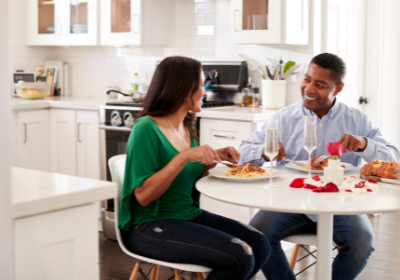 Valentine’s Day is one week away. If the pink and red hearts covering the walls of every grocery store and elementary school haven’t tipped you off yet and that sentence threw you into a panic — don’t worry. I’ve got you. There’s still time to plan a romantic evening that your weed-loving lover will never forget. Let’s start with dinner (and a little cannabis) and see where the night takes you. For our purposes, just remember the perfect Valentine’s Day date night only needs to be three things: mushy, gushy, and kushy. You bring the mush and gush; I’ll show you how to bring the kush. And hey, even if you’re riding solo on V-Day, make Mary Jane your canna-cutie for the night and treat yourself to a nice meal. You deserve it.
Valentine’s Day is one week away. If the pink and red hearts covering the walls of every grocery store and elementary school haven’t tipped you off yet and that sentence threw you into a panic — don’t worry. I’ve got you. There’s still time to plan a romantic evening that your weed-loving lover will never forget. Let’s start with dinner (and a little cannabis) and see where the night takes you. For our purposes, just remember the perfect Valentine’s Day date night only needs to be three things: mushy, gushy, and kushy. You bring the mush and gush; I’ll show you how to bring the kush. And hey, even if you’re riding solo on V-Day, make Mary Jane your canna-cutie for the night and treat yourself to a nice meal. You deserve it.
But first, a little history about terpenes. If you’re familiar with cannabis, you’ve probably heard about terpenes. In short, terpenes are what we taste & smell. All plants have terpenes, actually. Do you know when you head up to Snowbird and catch the smell of pine trees? That’s pinene. Terpenes are everywhere. Some of the most common terpenes found in cannabis are myrcene, limonene, and caryophyllene, but there are so many more out there. With the help of these flavorful, aromatic terpenes, we'll make date night a little extra dank with a few strains and products found in Utah pharmacies. Plus, you're going to look like a big-shot canna-seur to your date busting out all these delicious pairings. Always a win.
Relatively common in the Utah market, you can almost always find some Tangie strain somewhere. Tangie is a sativa-dominant strain that comes with a strong citrus flavor, rich with myrcene and caryophyllene. Myrcene strains can often have a musky, herbal flavor, but Tangie sticks to citrus, making it great to complement Asian dishes like orange chicken or Pad Thai. Plus, with myrcene’s sedation and relaxation effects, Tangie is sure to help you and your date to relax and ease into the evening. Tip: If you can’t find a Tangie strain at your local dispensary, patients say Tropicana Cookies is comparable.
Arguably one of the most popular sativa strains ever, Sour Diesel is a bit of a legend. Sour Diesel, the lovechild of strains Chemdawg and Super Skunk, got super popular in the 1990s and has been a fan favorite ever since. Its energetic and uplifting effects are perfect for those longer dates, like dinner and a movie, and is sure to keep you from dozing off. Sour Diesel has terpenes like linalool and caryophyllene in it, giving it a citrusy gas flavor profile… likely leading to its name. It is pungent in taste & in smell, making it a perfect pair for equally pungent garlic dishes. A tender steak and plate of garlic mashed potatoes are sure to impress your date and compliment your Sour Diesel hors d'oeuvres perfectly. Just don’t forget breath mints for after. It's is Valentine's Day, after all.
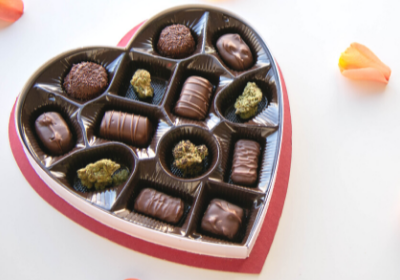 Girl Scout Cookies (GSC)
Girl Scout Cookies (GSC)Finally, there's Girl Scout Cookies. The cookie strains are some of my favorites. GSC is another widely loved strain in Utah's market and beyond, so named for its sweet, minty aroma. At first whiff, you’ll get a noseful of limonene, but sniff a little closer? There’s some peppery caryophyllene in there, too. It’s an indica-dominant hybrid known for its euphoric, relaxing properties that’s sure to set the most chill vibes for your evening. Don’t waste a bit of that beautiful three-course meal I know you have in you — just start with a little GSC. Its appetite-stimulant properties will help you push through those last few bites of dessert after you’ve said you couldn’t eat another bite. Plus, with the help of Girl Scout Cookies’ sweet, floral flavor profile, that heart-shaped box of chocolate will taste oh-so-much better (in more ways than one).
Remember, folks: when using cannabis, it’s always best to do so legally. So, let us help! If you’re not yet a Medical Cannabis patient in Utah, now’s the time to get your card. Schedule today and you could be in the dispensaries by the weekend, just in time for date night. All of us here at UtahMarijuana.org wish you a very safe and happy Valentine’s Day.
There is good news regarding Qualified Medical Providers (QMPs) found in the Utah Medical Cannabis Program's November 2021 update. According to the update, the state is changing how information on QMPs is gathered for the purposes of publishing provider information on the state website. If you are QMP, it is important that you get further information on this update.
To date, the Utah Department of Health (UDOH) has gathered QMP contact information and added it to the website manually. If you were to check the old list yourself, you would notice that many of the entries are incomplete, only including the provider's name with no address or contact info. But the state recently switched to an automated system.
The new system automatically runs a report across the entire EVS. That report is set to be run monthly at this point. It will gather QMP information directly from EVS applications and then publish the information as a provider list on the state website. It should prove to do a better job of maintaining an up-to-date list that patients can rely on.
If you would like to guarantee that your name and contact information appears on the state's online list of QMPs, you should log into the EVS. Then go to 'Tracking Inbox' and click on 'QMP'. Once you see your name, click on it. Your EVS application will appear. In that application will be a section labeled ‘UDOH Authorization to Publish’. You will find it on the lower right side of the application.
Update your information and click the 'Save' button to save the changes. Finally, tick the box that authorizes the UDOH to publish your information online. If anything changes, you can log back on and update your information. Also note that the system currently allows for only a single location. Providers with multiple locations will have to choose one or enter 'multiple locations' in the appropriate box.
We are happy to hear that the state website is being updated with a new report that will be run automatically. At the very least, the new system will increase the chances that the state's QMP list will stay up to date. That will be good for patients for obvious reasons. As tough as it can be for some patients to find QMPs nearby, the last thing they need is outdated information. This new system should help.
You can help patients by making sure your information is accurate. It might be a good idea for you to log on to the EVS every few months just to ensure that nothing has glitched with your contact information. Things happen. Being proactive is the best way to stay ahead of potential problems.
In closing this post, we want to acknowledge that updating the way the state collects QMP contact information isn't earth shattering. It is more like a baby step. But that's how this works. It takes a lot of baby steps to translate into kid steps, then teen steps, and finally adult steps. The UDOH is working hard to implement and maintain a Medical Cannabis program in keeping with legislation passed by lawmakers. They don't always get it right, but they are doing the best they can.
In the meantime, make sure that you are contact information is up to date. And if you are not yet a QMP, you can begin the process of becoming one by visiting the state's Medical Cannabis website and following the 'Provider' link. Everything you need to know to get the process moving is found there.
Much of the discussion surrounding Medical Cannabis relates to THC. We do not talk about CBD as much, and perhaps that's because anyone can use CBD products without obtaining a Medical Cannabis card. Knowing that, a recent survey suggesting that CBD may be an effective autism treatment is intriguing.
The survey was conducted by Autism Parenting Magazine. The magazine sent email surveys to some 160,000 subscribers around the world. Some subscribers were parents or grandparents of children on the spectrum. Others were caregivers, teachers, therapists, or medical providers.
Seeing as how hard scientific evidence detailing the benefits of CBD and THC are lacking, surveys like this one provide the most reliable evidence we have to date regarding the efficacy of Medical Cannabis. Note that CBD is a cannabinoid. It is as much a Medical Cannabis product as THC.
Looking at the survey data reveal some surprising results. At the top of the list is the fact that 20% of the respondents acknowledge self-treating their children on the spectrum with CBD. The U.S. appears to have the highest rate at 22.16%. UK caregivers treat autism with CBD at a rate of 14.29%, while the rest of the world comes in at 15.45%.
What does it all mean? It means that despite a lack of hard evidence in support of CBD as an autism treatment, one in every five adults providing care to an autistic child is seeing the benefits of treating with CBD firsthand. Caregivers administer CBD to children on the spectrum in order to:
One of the survey respondents, a medical doctor with an autistic son, acknowledged administering CBD for more than seven years. He claims that CBD has changed his son's life and, by extension, the lives of every member of his family. Though this doctor acknowledges that CBD may not work for every autistic child, it works for his son.
The icing on the survey cake was data that showed nearly 83% of the respondents would recommend CBD to other adults caring for children on the spectrum. The fact that no prescription is required makes such a recommendation even more powerful. After all, parents with children on the spectrum are always looking for advice from other parents successfully helping their autistic children.
CBD is a cannabinoid just like THC. However, it does not have the same mind-altering effects. It is also derived mainly from industrial hemp rather than other strains of cannabis. Best of all, both CBD and industrial hemp were legalized nationwide with passage of the 2018 Farm Bill.
The net effect of the Farm Bill is that parents do not have to apply for Medical Cannabis cards to purchase CBD products. They do not have to go to a Medical Cannabis pharmacy, either. CBD products are sold throughout Utah in grocery stores, corner pharmacies, and just about anywhere you can buy dietary supplements.
If you provide care for a child on the spectrum, you might want to ask your doctor about CBD. He or she may have no knowledge of its efficacy as an autism treatment. On the other hand, your doctor may have more information than you know. CBD might be just what your child needs to manage daily life.
As with all things cannabis related, CBD is not a miracle cure for any condition. But if it helps autistic children, it might be well worth looking into.
Eight years ago, Utah laws prohibited all forms of cannabis, even CBD, for everyone in the state.
Today, tens of thousands of Utahns have legal access to a broad range of Medical Cannabis products, including raw flower and other products with THC.
How did Utah, one of America’s most conservative states, undergo such a dramatic shift in its attitudes about cannabis?

A dropper of CBD oil
Former state Representative Brad Daw shared an insider’s perspective of the events and conversations that made him take cannabis medicine seriously.
Daw said the advent of “Charlotte’s Web” helped put Medical Cannabis on his radar back in 2013.
Charlotte’s Web is a low-THC, high-CBD cannabis strain named after Charlotte Figi, a young Colorado girl with Dravet syndrome. Charlotte’s parents, Matt and Paige Figi, were desperate for something to treat Charlotte’s frequent seizures. After exhausting their other options, the Figis decided to explore cannabis.
At the time, the idea of administering a cannabis-derived product to a child was almost unheard of. It wasn’t long before Charlotte’s story became international news and CBD became a household word.
“[W]ith Charlotte’s Web, we had to start saying, ‘Well, at least this substance called CBD, has some use.’ And that kind of opened the door for me and said, “All right. The notion that marijuana is a Schedule I drug or cannabis is a Schedule I drug, which means it has no real medical benefit that outweighs its risk or abuse potential’ just didn’t fly anymore. We have to change our thinking,” Daw said in a September 2021 episode of Utah in the Weeds.
In his own words, Daw described his realization about the therapeutic potential of CBD as a "paradigm shift."
A 2013 poll showed 61% of Utahns supported the idea of allowing people to use cannabis, with a doctor’s recommendation. The Utah Legislature dipped its toes into the Medical Cannabis waters the following year.
In 2014, Utah lawmakers passed the state’s first piece of Medical Cannabis legislation. Rep. Gage Froer’s House Bill 105 allowed patients to possess CBD oil under specific criteria.
H.B. 105 didn’t exactly open the floodgates for Medical Cannabis in Utah. It provided limited protection for people with intractable epilepsy and their caretakers but no one else. But at least it was a step in the right direction.
In 2015, state Senator Mark Madsen sponsored S.B. 259 to expand legal access to Medical Cannabis in Utah. His bill would’ve legalized Medical Cannabis—even cannabis with THC—for a much broader range of Utah patients.
But S.B. 259 failed, as did S.B 73, a similar bill that Madsen ran the following year.
State Senator Evan Vickers also sponsored Medical Cannabis legislation in 2016. His bill, S.B. 89, would’ve expanded patients’ access to low-THC, high-CBD cannabis. It also failed.
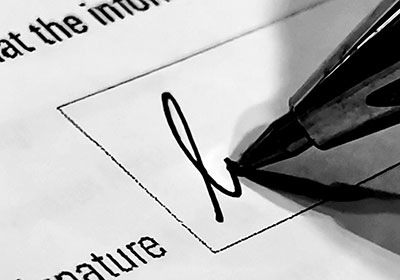
Volunteers gathered more than 153,000 signatures to put Medical Cannabis on Utah's 2018 midterm ballot.
By that point, it seemed unlikely that the Utah Legislature would pass anything resembling a comprehensive Medical Cannabis bill. Patients in need of Medical Cannabis felt frustrated to have their hopes smashed before their eyes. It was time to take the matter into their own hands. It was time for a citizens' initiative.
Advocacy groups like TRUCE, the Utah Patients Coalition, and Libertas Institute have spent years fighting for patients’ access to Medical Cannabis. So have national advocacy groups like NORML and the Marijuana Policy Project.
With the support of TRUCE and Libertas Institute, UPC led a signature-gathering initiative to put Medical Cannabis on Utah’s 2018 ballot. They gathered 153,894 valid signatures, exceeding the required number of signatures for a ballot initiative by more than 40,000. The ballot initiative resulted in Proposition 2, the Utah Medical Cannabis Act.
Toward the start of 2018, another poll showed more than three-fourths of Utahns supported the ballot measure. A group called Drug Safe Utah campaigned against Proposition 2 heavily.
A third poll just a few weeks before Election Day showed Prop 2 support had plummeted to 51% - right at the threshold of failure. Medical Cannabis advocates may have been discouraged by the poll results, but they didn’t lose hope.
“The opposition has spent a lot of money on … hysterical messaging points. But I think when push comes to shove, we have a huge advantage with the enthusiasm gap in support of Proposition 2,” said then-UPC spokesman DJ Schanz in an October 2018 interview with The Salt Lake Tribune.
As one might expect, Utah had an abnormally-high voter turnout that November. In fact, more than 75% of Utah voters participated in the 2018 midterm election.
“For comparison, just over 30% of Utah voters voted in the 2014 midterms. About 37% cast ballots in the 2010 midterm election, and 35% turned out in the 2006 midterm elections,” a post on the Utah Policy website says.
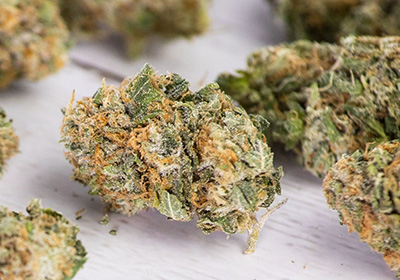
Utah's Medical Cannabis patients can purchase raw flower and other forms of cannabis at local cannabis pharmacies. Some, but not all, cannabis products sold in Utah contain significant amounts of THC.
In the end, Prop 2 passed narrowly, with 52.7% of voters in favor of it and 47.3% opposed.
Soon afterward, the Utah Legislature held a special session to make several critical changes to the original proposition. The session resulted in House Bill 3001, the Utah Medical Cannabis Act.
Governor Gary Herbert signed H.B. 3001 into law that December. He touted Utah’s new program as “the best-designed medical cannabis program in the country.”
Within 15 months, Utah’s Medical Cannabis program was up and running. By the end of 2021, more than 40,000 patients had registered with the program.
The program still isn’t perfect. Medical Cannabis patients have to get their medicine from Utah’s 14 cannabis pharmacies. They don’t have the option to grow their own.
Medical Cannabis patients in Utah often express dissatisfaction about the cost of their medicine. An eighth of an ounce of raw cannabis flower typically costs about $60. Although Utah’s Medical Cannabis tends to be more expensive than in other states, we’re pleased that it’s finally available.
Utah legislators expect to continue refining the program in each of their yearly sessions.
“We have a responsibility to make sure that our laws, hopefully not too slowly, but consistently move towards the best medical situation that we can provide for our patients, for the state’s patients so that we’re all equal,” said Rep. Jennifer-Dailey Provost in an October 2021 episode of Utah in the Weeds.
Among other changes, Dailey-Provost hopes to expand Utah’s list of qualifying conditions for Medical Cannabis.
“I do have a lot of heartburn about the list of qualifying conditions. I am glad; if nothing else, we have the compassionate use boards so that it’s not completely set in stone. It’s only kind of set in stone. But I think that we can do a lot better,” she said.
It’ll be interesting to watch Utah’s Medical Cannabis program continue to develop in the coming years. The Utah Legislature is currently in session at the time of this writing. We’ll keep you posted on any new changes to the program.
In the meantime, we expect many more patients will join the program. If you’re interested in Medical Cannabis, click here to reserve an evaluation with one of our Qualified Medical Providers.
After almost two years, Utah’s Medical Cannabis program surpassed its budding phase — it bloomed. According to a report put out by the Utah Department of Health earlier this month, Utah is now home to 41,419 Medical Cannabis patients, 826 Qualified Medical Providers, 433 Pharmacy Agents, and 72 Pharmacy Medical Providers. It’s truly remarkable how much the program has grown in 22 short months. However, Utah’s Medical Cannabis program leaves much to be desired for the average patient. Patients and others in the space argue that this is not the program they voted for. Accessibility is often listed as a major issue. At the end of the day, even after all this time, patients are still struggling to afford the medication and care they need.
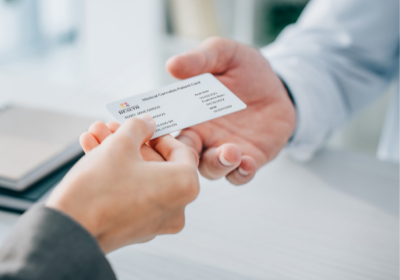 Being a patient in Utah’s Medical Cannabis program is expensive. There's just no way to sugarcoat it. With cannabis' Schedule 1 drug classification in the US, health insurance companies won’t touch it with a 10-foot pole. Translation: You’re paying for your own office visits. This comes as a shock to many and a wake-up call as to how expensive healthcare really is in this country. A new patient appointment, without insurance, typically costs anywhere from $170 - $450, depending on specialty. The harsh reality of Utah’s Medical Cannabis program is that if you want to make the switch to canna-medicine, you’re likely going to have to budget for it.
Being a patient in Utah’s Medical Cannabis program is expensive. There's just no way to sugarcoat it. With cannabis' Schedule 1 drug classification in the US, health insurance companies won’t touch it with a 10-foot pole. Translation: You’re paying for your own office visits. This comes as a shock to many and a wake-up call as to how expensive healthcare really is in this country. A new patient appointment, without insurance, typically costs anywhere from $170 - $450, depending on specialty. The harsh reality of Utah’s Medical Cannabis program is that if you want to make the switch to canna-medicine, you’re likely going to have to budget for it.
UDOH took a step in the right direction earlier this month by doing away with the initial 90-day card requirement. Previously, patients were required to have their Medical Cannabis Card renewed just 90 days after they had received it. While it cost only $5 to be issued a new card by the state, the adjoining clinic visits were often a different, pricier story. Many patients found themselves feeling duped to be asked for money again so soon by their Medical Cannabis clinics. I'm sure I can speak for all of us when I say I'm glad that's in the past. Kudos to UDOH.
Clearly, it's up to us to understand the program well enough to know when we're being taken care of and when we're being taken advantage of. So here it is, plain and simple: You see your QMP once to establish care and get your card. Then, you see them again in six months (valid for patients first seen after January 3rd, 2022). You'll see them once more six months after that. Typically, during that 3rd appointment, your QMP will decide whether or not your condition is stable enough to move to yearly visits. (Some patients may require extra care and more frequent visits. This is always left up to the discretion of the patients' QMP.) If your Medical Cannabis clinic claims you need to come in any more often than that, consider it a red flag. Break up with them — you deserve better. I know a great place. *wink, wink*
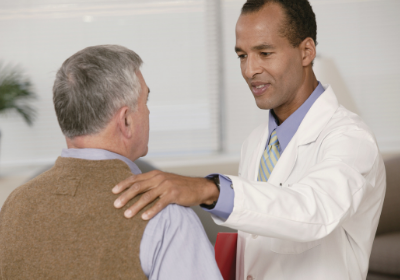 UTTHC understands that the cost of canna-care is still out of reach for many who need it. Frankly, that doesn't sit right with us. It simply doesn’t make sense to allow the state access to this potentially life-changing medicine if we deny the very people who need it the most due to cost. That’s why UTTHC launched Uplift.
UTTHC understands that the cost of canna-care is still out of reach for many who need it. Frankly, that doesn't sit right with us. It simply doesn’t make sense to allow the state access to this potentially life-changing medicine if we deny the very people who need it the most due to cost. That’s why UTTHC launched Uplift.
UTTHC Uplift is a patient subsidy program in which citizens are able to help by making a donation. What’s more, UTTHC and our four partners (Beehive Farmacy, Zion Medicinal, WholesomeCo Cannabis & Deseret Wellness) match each donation dollar-for-dollar, magnifying each donation by 6x! Since the launch of the program in December, with the help of our community, Uplift has raised $1,836 toward vital canna-care for those in need and subsidized the cost of 22 patient visits (as of January 18, 2022).
Uplift can currently support patients earning less than 138% of the federal poverty threshold and/or who suffer from terminal medical conditions. In order to receive an Uplift subsidy, a prospective patient must:
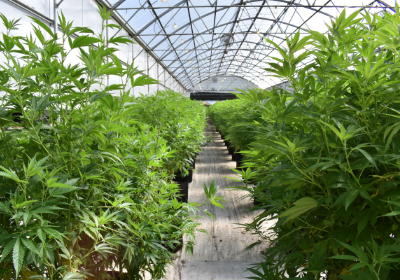 All in all, there’s good reason for Utahns to resent the cannabis program here. Sure, the existence of a program at all is a wonderful thing. Frankly, it's something I didn’t personally see for Utah for many years to come, but it’s far from perfect. Perhaps one day we’ll see a more patient-focused Utah Medical Cannabis program. Lower costs, maybe even growing? It’s hard to say just where we’ll end up. But until we get there, know that UTTHC is in your court. And hey, you didn’t hear this from me, but they’ve got a few more tricks up their sleeves to lessen the financial burden for Utah patients coming soon.
All in all, there’s good reason for Utahns to resent the cannabis program here. Sure, the existence of a program at all is a wonderful thing. Frankly, it's something I didn’t personally see for Utah for many years to come, but it’s far from perfect. Perhaps one day we’ll see a more patient-focused Utah Medical Cannabis program. Lower costs, maybe even growing? It’s hard to say just where we’ll end up. But until we get there, know that UTTHC is in your court. And hey, you didn’t hear this from me, but they’ve got a few more tricks up their sleeves to lessen the financial burden for Utah patients coming soon.
Still in need of a Medical Cannabis Card of your own? Reserve an appointment in any of our Medical Cannabis clinics across the state here. If you qualify for an Uplift patient subsidy and would like to apply, fill out an application here. If you'd like to spread the love and make a donation to the Uplift program, find more information here. Feel better, Utah. For less.
Marijuana drug tests can be given for a variety of reasons. Employers, schools, law enforcement agencies, and many parents use them to ensure the people under their tutelage are cannabis-free.
Imagine you’re a cannabis user who has just been offered a new job. It’s time to celebrate, right? Maybe you’d throw a party or a small get-together with a few friends. The person in charge of music plays Kool & The Gang’s “Celebration" at least once or twice. Our good friend Mary Jane also joins the festivities.
Then, once you begin the new job, your employer drops a bomb on you. You have to get a drug test by tomorrow afternoon. Did you hear a record scratch just then, or was it just me?
You try not to let your employer perceive your internal panicking and say, “OK, no problem.” You now have less than 24 hours to prepare. What do you do?
Fortunately, the internet has a wealth of advice for cannabis users in this situation. But, as we hope to demonstrate, some of this advice is not worthy of your time.

There are several ways to pass a drug test, but only one we can guarantee.
Your local laws may prohibit the use of synthetic urine or adulterants to pass a drug test. If you choose to break the law, you do so at your own risk.
With that in mind, the only method for passing a marijuana drug test we’ll recommend is abstinence from cannabis.
But we think it’s worth exploring some of the other methods, if only for informational purposes. We offer no guarantees that anything but abstinence will help you give a clean urine sample.
This article doesn’t consider other testing methods (blood, hair, saliva, sweat, fingernails, toenails) because urinalyses are the most prevalent.
UtahMarijuana.org’s Instagram account recently received an interesting comment that caught our attention.
The commenter responded to our post about taking tolerance breaks from cannabis, which we routinely recommend for most patients.
Usually, an effective tolerance break from cannabis lasts at least 48 hours. But the commenter suggested a much faster alternative.
To summarize, they recommended sitting in a steam room for an hour (with breaks to cool off every 15 minutes) and drinking plenty of water.
“Resets you back to near zero in less than 2 hours, and you didn’t hear it from us, but it’ll make ya pass court drug tests too,” the commenter claimed.
That last part made us wonder: Is it possible to pass a drug test this way?
We were skeptical but decided to test it out anyway.
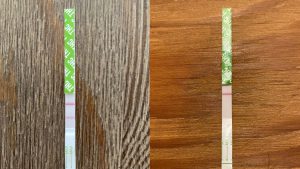 The Steam Room Experiment: Preparation
The Steam Room Experiment: PreparationOur volunteer test subject, “Sam,” spent a weekend using a mixture of THC edibles, vape cartridges, and flower. Sam says he used much more THC than usual that weekend. What a trooper!
At this point in the experiment, we used some inexpensive at-home THC testing kits on Sam and another volunteer, “Lewis,” who does not use cannabis. As expected, Sam tested positive for THC, and Lewis did not. We'll note that the testing kits, though inexpensive, meet the federal standards for THC testing.
Sam wanted to take a 48-hour break from cannabis before the next phase. We were OK with that. THC metabolites typically remain in the body for up to 30 days. A two-day break should not have affected his test results.
Just to make sure, we gave Sam another THC test at the end of his tolerance break. As expected, he tested positive again.
On the big day, Sam drank lots of water, per the original instructions we saw on Instagram. All in all, he drank about five liters (more than double his usual daily amount). He drank three of those five liters while sitting in the steam room, once again according to the instructions.
Sam says he enjoyed the experiment at first. He likes sitting in steam rooms, so he was happy to be our volunteer. But his enjoyment came to an end after about 10 minutes. The rest of the experiment made him feel dizzy and weak.
He took breaks to cool off every 15 minutes. On his third break, he vomited.
Despite his misery and temptation to give up, Sam completed the experiment. He really is a trooper! But was it worth the effort?
As mentioned earlier, we were skeptical about the steam room method from the beginning. Sam’s post-steam room THC test was positive, and we were disappointed but not surprised.
The experience was not only miserable for Sam but unsuccessful too. Our advice here is to avoid the steam room method altogether.
After a couple of months, Sam forgave us for the steam room incident and agreed to try something else. We visited two local head shops and asked for their recommendations.
Employees at both shops immediately grabbed boxes of High Voltage Detox Double Flush. We bought one in lemon-lime flavor and gave it to Sam.
Sam followed all of the High Voltage directions exactly. He drank the recommended amount of water the night before using the product. He also avoided “unwanted toxins” (THC, in this case) for at least 24 hours before using the High Voltage.
Sam is a moderate cannabis user, and we felt much more optimistic about this rapid detox method than we did about the steam room method.
High Voltage recommends their Detox Double Flush for people who weigh 240 pounds or less. Sam weighs 185.
Sam was ready to try again after ingesting all of the High Voltage doses (a combination of six capsules and a 16 oz. drink).
The High Voltage directions say the product works best after three normal-size urinations. We tested a sample of Sam’s fourth urination, which was still positive. So were his fifth, sixth, seventh, and eighth.
This product simply did not work as the packaging (and two head shop employees) led us to believe.
Perhaps we’ll test other detox products in the future, but we find it troubling that a highly-recommended brand didn’t work as intended.
We surveyed several other cannabis users about their experiences with defeating drug tests.
One has also used High Voltage Detox Double Flush a few times. She paraphrased Paul Rudd’s famous line from “Anchorman” to describe her experience: “75% of the time, it works every time.” I don’t like those odds, especially if something important like a new job is on the line.
Another survey participant tried a combination of exercise, vitamins, water, Gatorade, and other beverages to cleanse her system. The testing facility rejected her initial urine sample because it was too diluted. A week later, she tested negative for THC.
In her case, she only needed to flush out the THC metabolites from a single inhalation. Before that, it had been several months since she had used any cannabis. Because she had such a small amount of THC metabolite, her regimen of exercise, vitamins, and beverages may not have been necessary.
Two of our survey-takers recommended a brand of synthetic urine called Quick Fix. One said it helped her land a new job. But the other had a word of caution.
“Quick fix works well unless they smell your urine. Which never has happened to me, but I have a friend that happened to,” she said.
Let’s go back to the "new job" scenario. This time, you still didn't abstain from cannabis long enough to guarantee a clean urine sample. But you have a secret weapon in your purse or pocket!
You tried to cleanse yourself of THC metabolites, but the test still came back positive. Your boss knows.
If you were to find yourself in that position, wouldn’t it be nice to be able to reach into your wallet and pull out a Medical Cannabis Card? That little piece of paper or plastic might be all it takes to turn the conversation around and let you keep your job.
That’s why we think a Medical Cannabis Card is your best line of defense against anyone who objects to your use of cannabis. Give us a call at 801-851-5554 to book your Medical Cannabis evaluation.
Have you tried any methods to slip past a drug test? It would be Kool & The Gang of you to tell us about it in the comments!
State legislators did Medical Cannabis patients in Utah a favor earlier in 2021 when they passed legislation to expand access. The bill called for the Utah Department of Health (UDOH) to implement a system to accommodate the changes by September 1. That UDOH deadline has come and gone. Now that it has been missed, where do we go from here?
First, we want to make it clear that delaying implementation of the new rules is not the end of the world. It is certainly not the ideal situation, but the UDOH will get it done one way or the other. And once finally implemented, the legislation will definitely increase access to Medical Cannabis among qualified patients, especially in rural areas.
Among other things, the legislation changed the rules so that cannabis recommendations are no longer limited to registered Qualified Medical Providers (QMPs) limited to 275 patients each. Under the new rule, QMPs registration will still be available to providers who want it. But any physician, nurse practitioner, physician assistant, or specialist with prescribing authority will be able to recommend Medical Cannabis for up to fifteen patients without becoming a registered QMP.
That may not seem like a significant number, but a hundred new providers in just one city gives access to 1500 additional patients. Just ten new providers in a rural area opens the door to 150 patients. Take our word for it when we say this is a big step forward.
From the outset, state legislators wanted to make sure our Medical Cannabis program remained tightly controlled. The goal has always been to make sure it remains a medical-only program. Though it is not clear why, the program's original architects believed that the current system was the best way to go in terms of who recommends Medical Cannabis.
It was only after some investigative journalism and public pressure that state lawmakers realized access to QMPs was too limited. To their credit, they responded with the legislation passed in early 2021. Now it is up to the UDOH to make it all work. For their part, they are blaming delayed implementation on a lack of staffing and undisclosed software issues.
While we wait for the UDOH to sort out their issues, the same QMPs are ready and available. You can find a list of QMPs on the state's Medical Cannabis website. We can't vouch for the accuracy of that list, but we do operate six clinics of our own. Just follow the 'Get a Card' link found on any page of our site and you'll be guided through the process of making an appointment to see one of our QMPs.
If you live in a rural area that is underserved at this point, we understand your frustration. We know how tough it can be to drive into one of Utah's cities to visit with a QMP or purchase your medicines. Thankfully, home delivery is now being developed in Utah. Already, many parts of the state are covered. Be patient. The rest of the state will eventually be open to home delivery.
Please be patient with the QMP issue as well. Once the UDOH gets everything ironed out, it is entirely possible that your own local provider will be able to help you with obtaining a Medical Cannabis card. At the very least, you'll have more choices than the system currently allows. And who knows? Maybe the day will come when any medical provider with prescribing authority will be able to recommend to an unlimited number of patients.